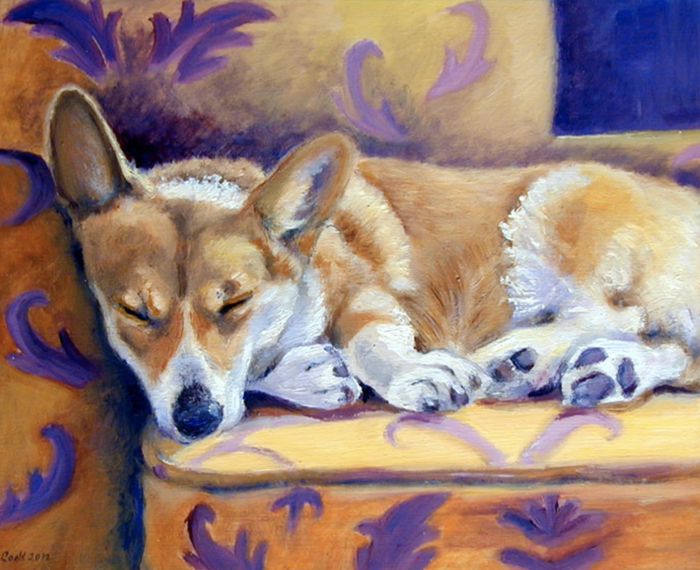
If you’re considering a Pembroke Welsh Corgi as your next companion, don’t settle for anything less than a purebred puppy or dog bred by a preservation breeder. Don’t be fooled by marketing ploys, and be aware (and wary) of a puppy touted as a “rare bluie.” If you are hoping to show such a puppy, you’ll start out disadvantaged because it is considered a very serious fault in an AKC conformation ring.
To be clear, the AKC breed standard allows for four colors: Black & Tan, fawn, red, and sable (and white markings). This is not a merle as there is no such thing (or should there be) as a purebred merle Pembroke Welsh Corgi.
In bluies, the normal coat color is “diluted” and appears washed out or diluted. The colored portions of a bluie have a distinct bluish or smoky cast, which is to say that a bluie can occur in any aforementioned color; the areas of a tricolor coat that are normally black take on a gunmetal blue cast, while red and sable bluies have a smoky cast to their coloring. The bluie coloring is associated with extremely light or blue eyes, liver or gray eye rims, and slate colored nose and lip pigment, and that, too, is problematic since the standard calls for a black and fully pigmented nose. We’re read that breeders can tell at birth what they’ve got: red bluies are born light fawn colored, while bluie black and tans, or tricolor bluie pups are born squirrel grey. With maturity, red bluies become a somewhat soft, dusty light red color
The bluie is caused by the “d” gene. The dominant D gene has no influence on the pigmentation while “d” acts as a dilute. “d” is recessive which is to say that both parents must be carriers (Dd), to produce a blue Corgi (dd). Put another way, bluies happen when a puppy inherits two copies of the dilution gene, one from each parent.
Bluies make fine companions, and have no articular health issues related to their coloring of which we’re aware. They can be registered with AKC under their primary color, and they can participate in performance events, but they shouldn’t be bred, nor should they be exhibited as the outing won’t end in success. Happily for the breed, bluies aren’t common, but they do pop occasionally up to the extent that in the Welsh Corgi League‘s 1957 Handbook, the bluie is mentioned.
This is a cautionary post advising readers who are considering the breed to be chary of anyone breeding for unacceptable colors. These pups are often marketed as ‘rare,’ and as such, are usually more expensive. At the end of the day, if the color was bred purposefully, it was done with little regard for preserving the breed.
If the color topic in this breed interests you, you may want to check out the post below on “Whitelies:”
Image: Welsh Corgi by Lyn Hamer Cook from DogArtByLyn
www.facebook.com/PetArtbyLyn
www.petart.net
https://fineartamerica.com/profiles/lyn-cook
